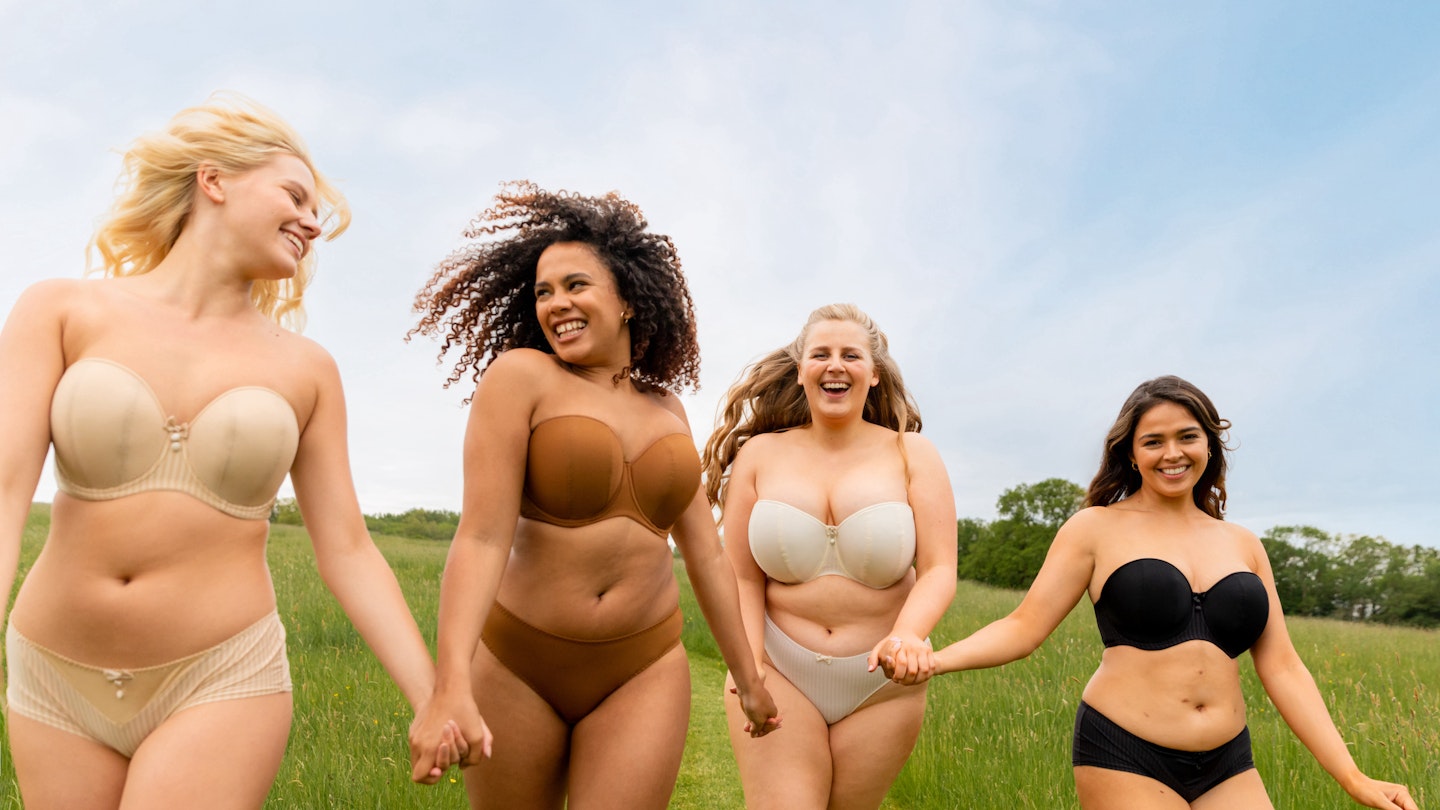Being busy people, we rarely have time to catch up on the latest series on Netflix, let alone think about measuring our boobs, right? Like the latest trending series, though, our bra size can also change on what can feel like a weekly basis. So, it’s important to keep up to date with your current size to make sure you’re wearing the best bra possible, a bra that's so incredibly supportive that you almost don't notice you're even wearing it. In Boux Avenue's 2022 study conducted by YouGov, the lingerie brand found that 30% of women surveyed have never had a bra fitting. If that wasn't eyebrow-raising enough, it also found that 20% have only had one in their lifetime! We're not saying you have to go every month, but getting measured once every six months or every year is what a lot of lingerie brands recommend.
Despite a well-fitting bra being the difference between having a comfortable day or a very uncomfortable day, a lot of people don't know their true size. ‘A large proportion of women arrive wearing the wrong cup size,’ says Stephanie Dear, senior product technologist for lingerie at M&S. ‘It’s unflattering, particularly if it creates lumps and bumps underneath clothes. Once we’ve addressed the problem customers can’t believe the difference; their bust line is lifted and smoothed and they have a tummy again. It’s also important customers know that while good fit is important, the size doesn’t matter; it’s just a number and a letter.’ And with many brands offering in-store fittings - note John Lewis & Partners, Boux Avenue and, of course, M&S, with over a million customers using its service, BraFit, per year – it’s surprising that so many of us are walking around wearing the wrong bra.
How do I know if my bra fits?
If you want a summary of how to know if your bra fits, we asked Ade Hassan, the founder of lingerie brand Nubian Skin. ‘First, make sure the band is snug but comfortable, so it’s giving you most of your support - that means your straps won’t dig in. Second, ensure your breasts are encompassed so you have no bulgy bits and your boobs don’t look like hot cross buns!’
So if you're easing yourself into the process of bra shopping, or want to get an idea of your measurements before you head to a high street lingerie department, it's going to help to know how to measure your bra size from the comfort of your home.
How do I measure my bra size at home?
The first thing to note is that almost every lingerie brand has a wealth of information about bra sizes on their website, including fit calculators and size conversion charts, so it's easier than you might think to arrive at the right size - even if you're not willing to step out of your house. Boux Avenue's method involves measuring your band size by standing in front of a mirror without a bra on. 'Use the tape to measure around your ribcage, directly under your bust (along the bottom of where the band would sit). Keep the tape snug against your body, and level all the way around.' Once you have your measurement in centimetres, you can use then its easy-to-understand underband measurement chart to convert your measurement into a back band size. You've then got the first part of your bra measurement.
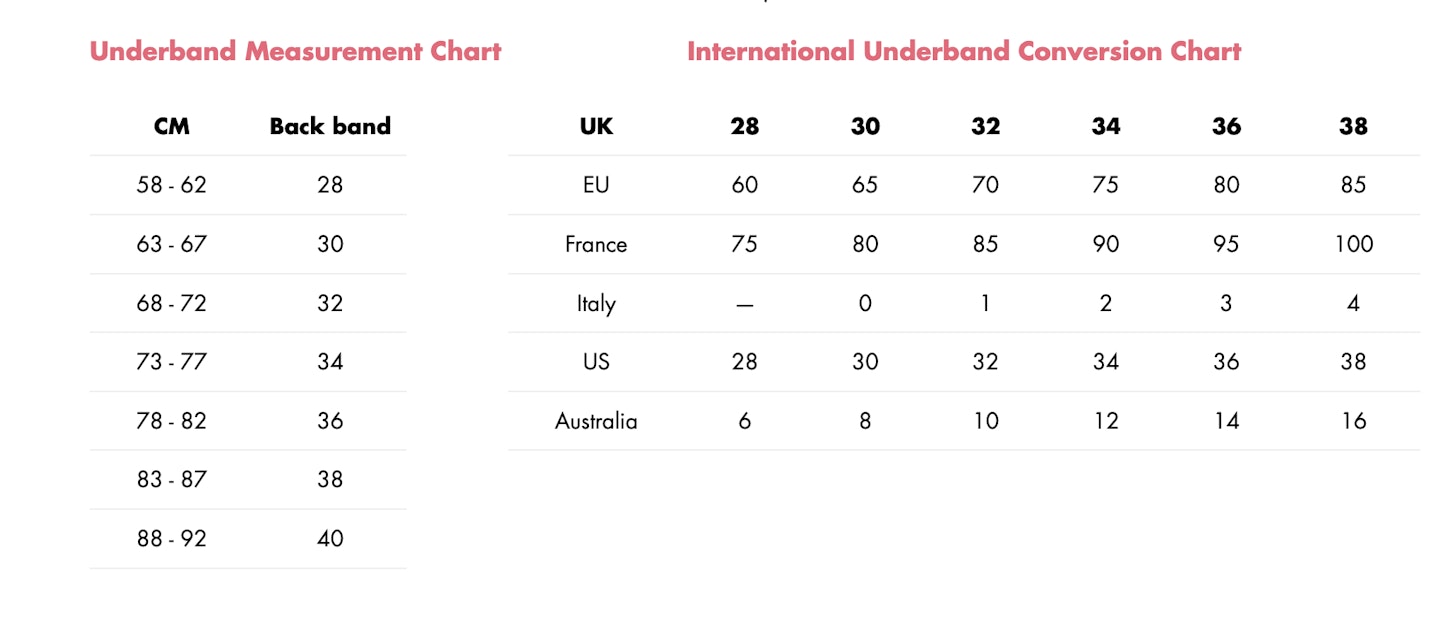
The second part is your cup size, which is a little trickier to gauge at home but still doable. According to Boux Avenue, all you have to do is compare the underband measurement you've just taken with one of your current bras. Hopefully, the band sizes aren't too different - otherwise you've probably been wearing the wrong size - but if it's smaller, you most likely have to go up a cup size. If it's bigger, you probably need to go down a cup size.
You also might have heard of what's called bra 'sister sizes'. According to lingerie brand Dora Larsen, who has a wealth of information on its website: 'Sister sizes are bra sizes that have the same cup volume as your current bra size and can be a good way to find an alternate size if you need one. To calculate your sister size, you go up a cup size and down a band size or go down a cup size and up a band size. E.g if you are a 34C, you can try a 32D or a 36B.'
If you're anything like us, M&S was probably your first brush with a bra fitting. And if you're struggling to figure out your band size or cup size just with a tape measure and a mirror, the famously reliable lingerie retailer has an online tool that can help you measure your bra size based on your current best-fitting bra. Guiding you through a set of questions, including your best-fitting bra's band size, cup size and brand, as well as whether it offers you low coverage, medium coverage or full coverage, it will then calculate your recommended size so that you can shop from the comfort of your sofa while almost guaranteeing that you won't have to return every bra you buy.
How do you measure your bra size without a tape measure?
If you don't have a measuring tape to hand, use a length of ribbon or a piece of string instead. Use the same method described above then measure the resulting ribbon or string in centimetres with a ruler.
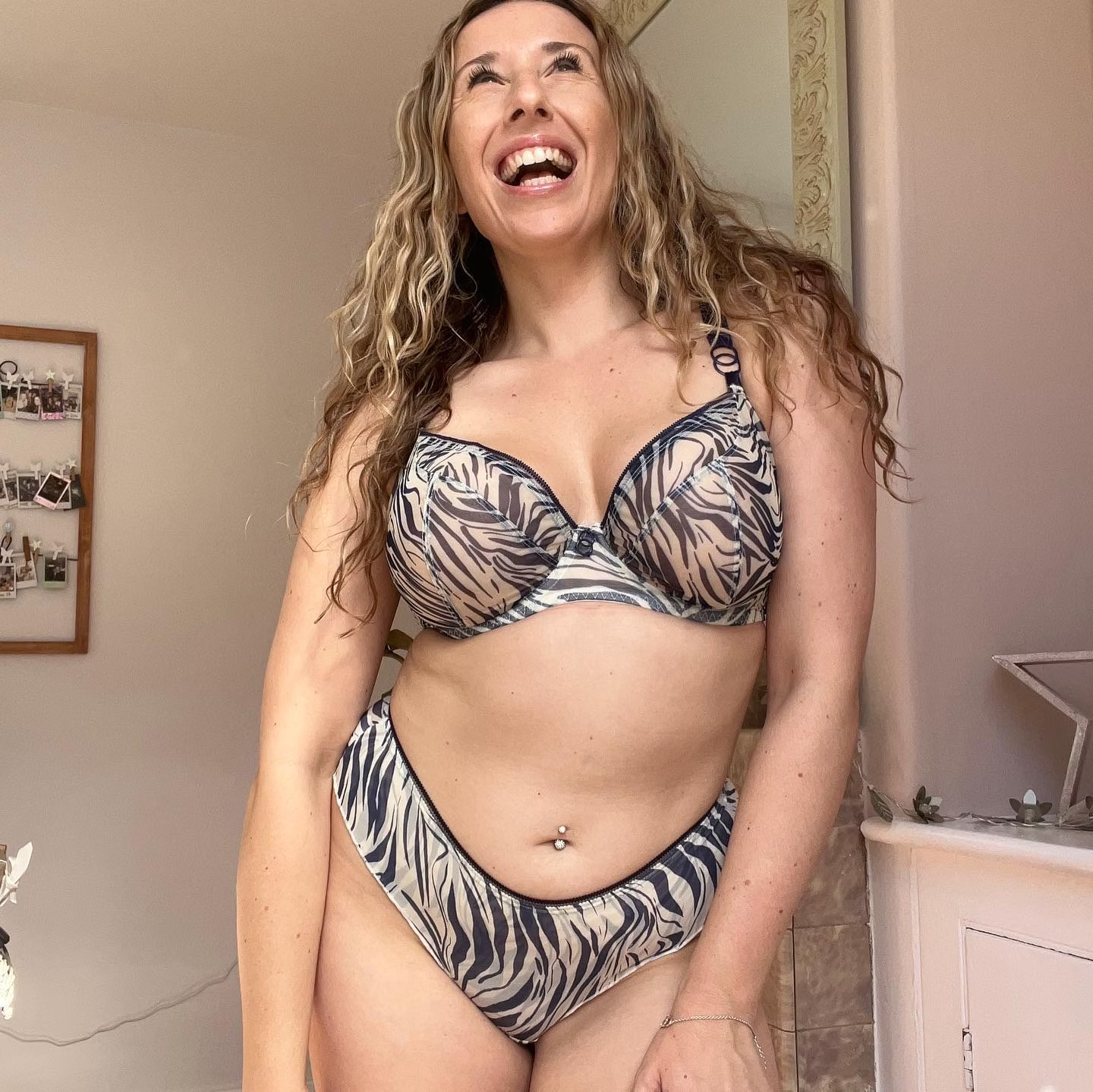
If, however, you still need a bit more guidance when it comes to finding the right fit, that's where Katie Weir - PR and content manager at lingerie brand Curvy Kate, as well as the so-called ‘bra whisperer’ - comes in.
Whether you prefer a non-wired bra, a balcony bra or even a backless bra, Katie knows how to find the perfect fit. The first step, she says, is knowing if you’re wearing the wrong bra size.
How to know if you’re wearing the wrong bra
-
Your breast tissue is falling out of the cup creating double boob and side boob.
-
The wires are digging into your armpit area/breastbone or floating away from your body at the centre of your bra.
-
The back band is riding up too high at the back.
-
Your straps keep falling off your shoulders or digging in.
-
Your bra cup feels like it is tipping forward.
These are all signs that you need to learn how to measure your bra size. To reiterate, Katie says: ‘You should look to have a bra fitting every six months. Treat this as a fun moment with friends or some ‘me time’ but it should never be something that you worry about. Either way, it’s the perfect excuse to treat yourself to a new lingerie set.’
How the perfect-fit bra should feel
We can probably all agree that we all have a favourite bra, right? It’s easy to stick to your trusty, loyal lingerie but trying out new styles can overhaul your whole look. Katie tells us, **‘**The majority of women will have a bra style which makes them feel the most comfortable, but this doesn’t mean it is the only one that you can wear. Try different bra styles under outfits just to broaden your style, a bra-drobe is something we often speak of and it features a plunge bra for low-cut outfits, a balcony for higher necklines, a strapless bra for off the shoulder and a multiway bra for those outfits that are trickier to wear.’ Here's how a well-fitting bra should feel, according to Katie:
-
Back band should feel firm, a two-finger tension is what we use as industry standard. And with 80% of the bra’s support coming from the back band, it really should hug you.
-
Your breast tissue should be encapsulated within the wires/cup of the bra and should never dig in. My top tip is that when you lift up your arm, the underwire should sit in line with the back of the armpit. This means all of the breast tissue is sitting within the cup.
-
Wires should sit flat against the breast bone between your boobs and not float.
-
The slider on the strap should sit in the middle of the strap, in line with your armpit crease (although this depends on height), but should never be adjusted to sit on top of the shoulder.
Ways to make your bra last longer
‘Your everyday, go-to bra will last you up to one year but there are ways to get the most out of your bra. These are my three top tips’, Katie tells Grazia.
Always wear a new bra on the loosest hook and tighten it up as you wash and wear. Most bras have three hook and eyes so move them in one every four months to get the same 80% support from your band.
Hand-washing your bras will give them the best life and ensure that they do not lose elasticity or shape prematurely. NEVER tumbledry!
Retailers who do not specialise in lingerie can differ in size, so my best advice would be to always shop from dedicated lingerie retailers, brands or boutiques for consistency.
How to avoid spillage?
Spillage occurs when the side of your breasts don't fit the cup, often a result of reducing your back size. To combat this try a different style of bra that offers better support.
How to avoid gaping?
Try tightening your bra straps or cinching in the band. If this doesn't work consider going down a bra size.
What are the best bras for my shape?
Just like clothes, all bras fit different. Scroll to identify your breast shape and find the perfect bra...
Round breasts
As round breasts are equally full at the top and the bottom, most bra styles work well for this shape. Full coverage and plunge bra are comfortable as well as flattering.
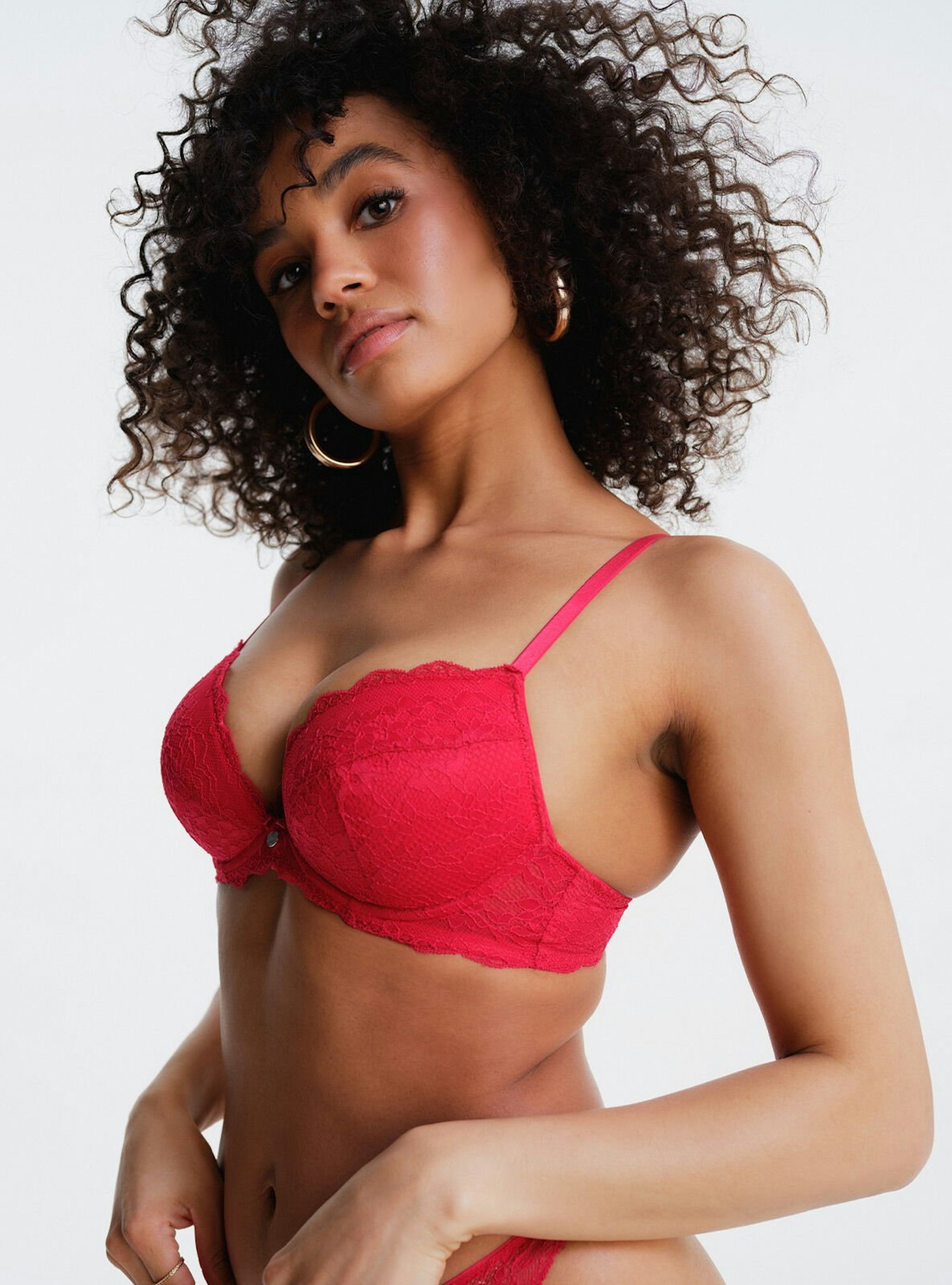
www.bouxavenue.com
Boux Avenue's Mollie plunge bra is the brand's most-loved bra. In fact, it's so good, one is sold every seven minutes! It's not hard to see why. At £28, it's an affordable price while still delivering everything you need from a bra that will become a hard-working part of your 'bradrobe'. With padding, floral lace, scalloped-edge detailing and satin bows, it makes the everyday a little more special. Band sizes run from 28 to 40; cup sizes, meanwhile, run from A-G.
Wide-set breasts
Some breasts have a wider centre gap, exposing more of your chest area. Front closure bras, T-shirt bras and plunge bra styles are the best bras for wide-set breasts.
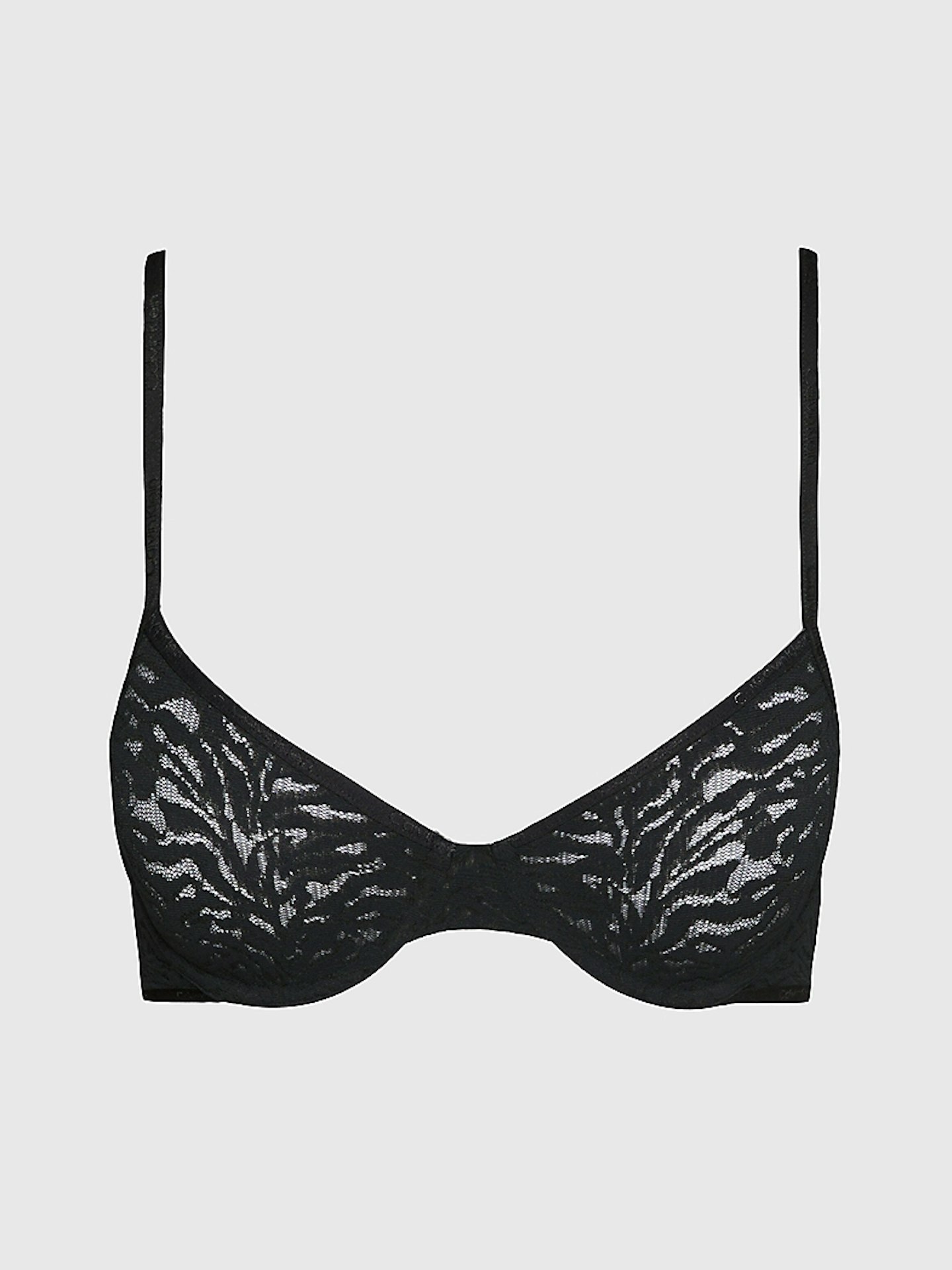
www.calvinklein.co.uk
This semi-sheer bra is made of soft-brushed lace for a peekaboo effect. Its demi cups aren't padded but are underwired, with adjustable straps and a classic hook fastening. The size range for this bra is smaller, from 30B - 38D, but it's possible to buy the matching knickers if you want to take a more coordinated approach to your underwear drawer.
Tear drop breasts
Tear drop-shaped breasts are round, with a slightly wider bottom. This shape doesn't require much lift, so most underwire styles are suitable. You could also consider a balconette bra or bralet.
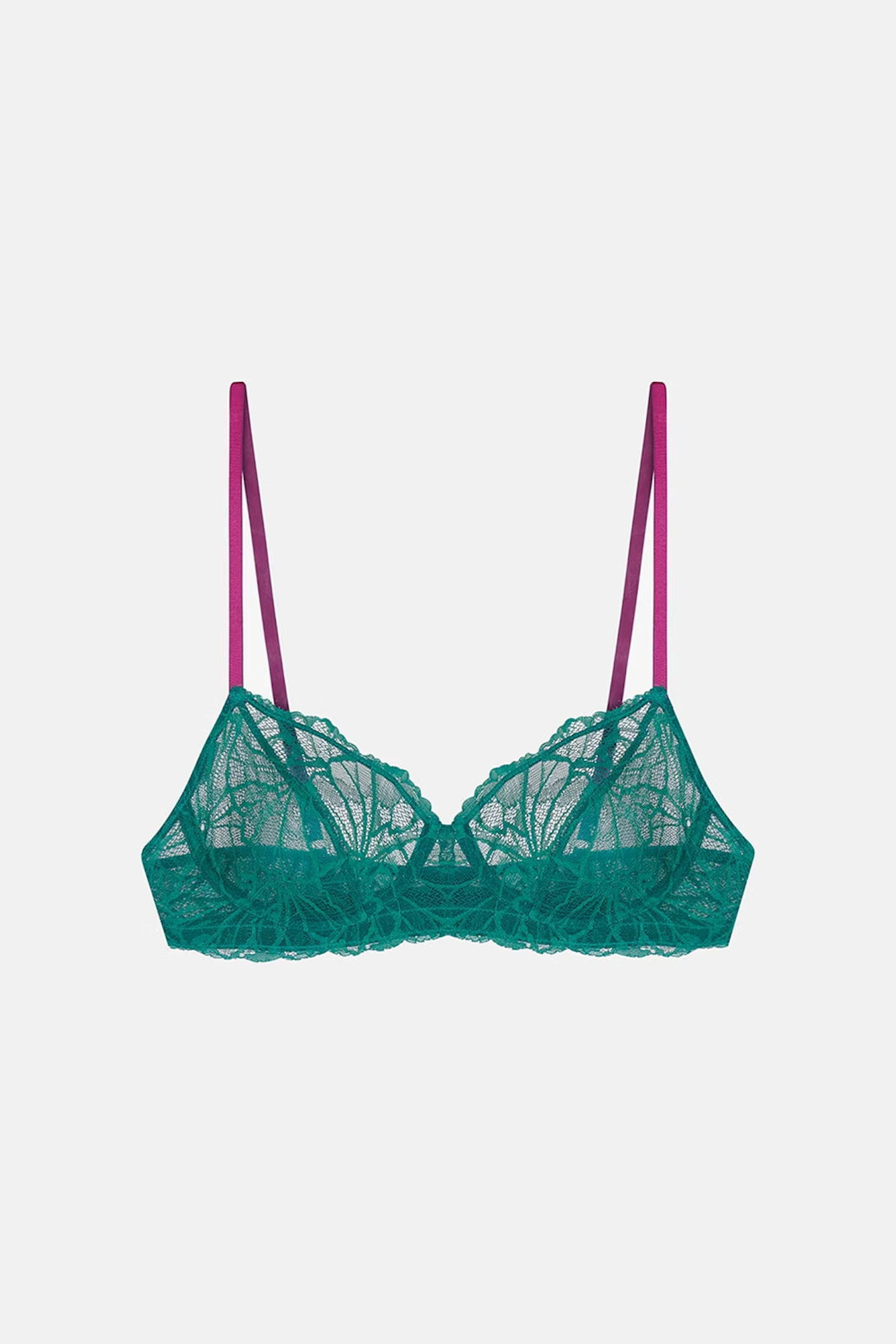
doralarsen.com
Dora Larsen's graphic-lace underwire bra is a balconette shape, which has a flattering neckline and comfortable feel that makes it perfect for everyday wear. The unpadded cups are lined with tulle for extra support, while the lace, tulle and trims are all made from recycled materials.
Bell-shaped breasts
Bell-shaped breasts are large, full at the bottom, and slimmer at the top. We recommend plunge-style bras or a full coverage bra.
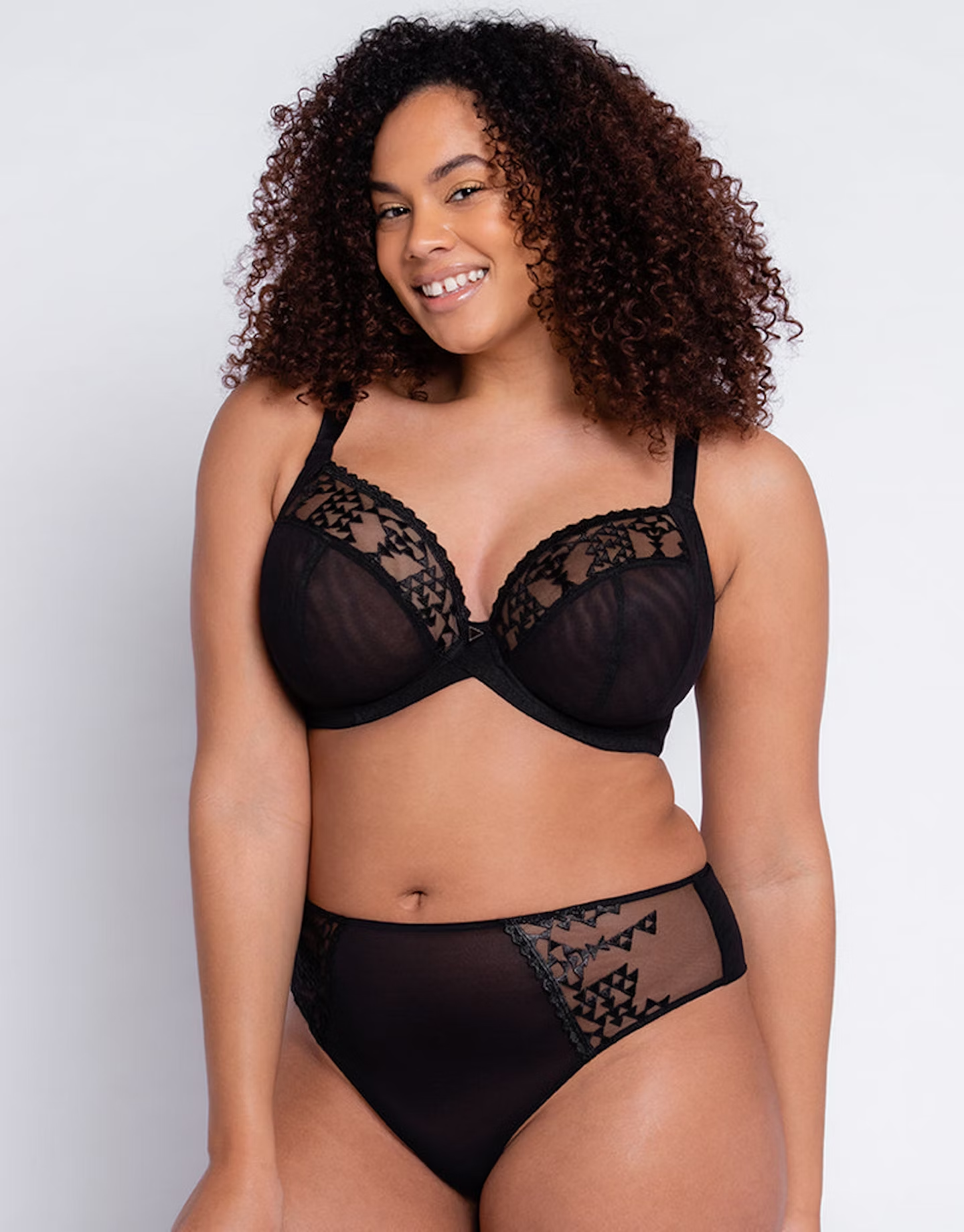
www.curvykate.com
If you're after a lower-front bra, look no further than Curvy Kate's. This bra is perfect if you want a silhouette that plunges without the worry of spillage into the middle of the chest. It's also got underwiring and side support, which both contribute to a great rounded shape, and a cross-over centre front that means that the underband won't dig in under your boobs.
Asymmetric breasts
Asymmetric breasts usually have one breast that's larger than the other. Size to the larger breast (as it requires more support) and opt for a bra with stretchable and moulded cup. The best styles are: bralets, wireless bras and stretch-lace bras.
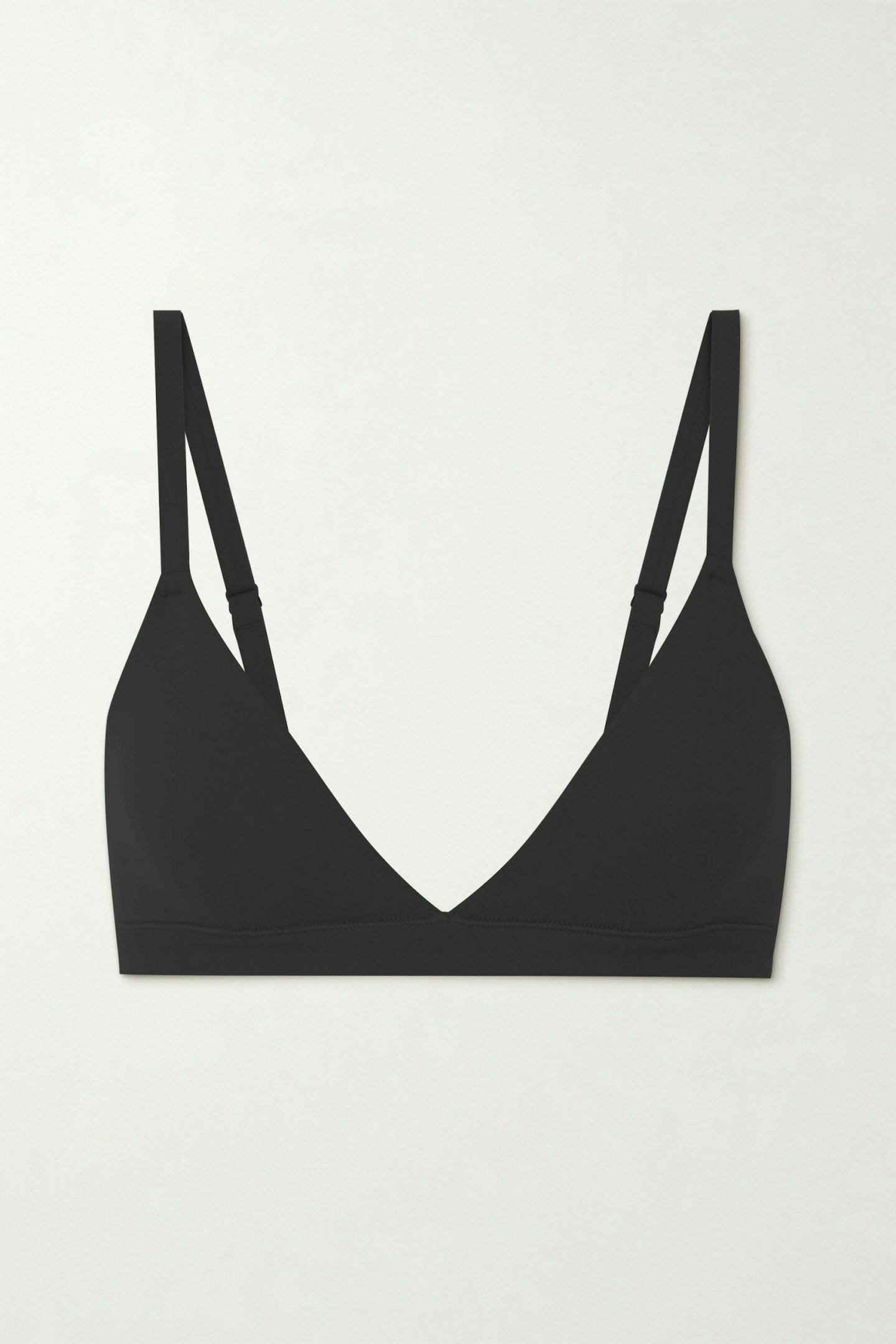
www.net-a-porter.com
Skims has quickly become a go-to for comfort and fit. This triangle bralette is made from 2-ply stretch fabric that won’t dig into your skin and is lined with the label's innovative ‘power mesh’. The shoulder straps are also fully adjustable.
Julia Harvey is Grazia's Shopping Editor. Harriet Davey is a freelance fashion editor and stylist based in London.
